VLC is one of the best open source video players, if not the best. What most people don’t know about it is that it is a lot more than just a video player.
You can do a lot of complex tasks like broadcasting live videos, capturing devices etc. Just open its menu and you’ll see how many options it has.
It’s FOSS has a detailed tutorial discussing some of the pro VLC tricks but those are way too complicated for normal users.
This is why I am writing another article to show you some of the simple tips that you can use with VLC.
Do more with VLC with these simple tips
Let’s see what can you do with VLC other than just playing a video file.
1. Watch YouTube videos with VLC
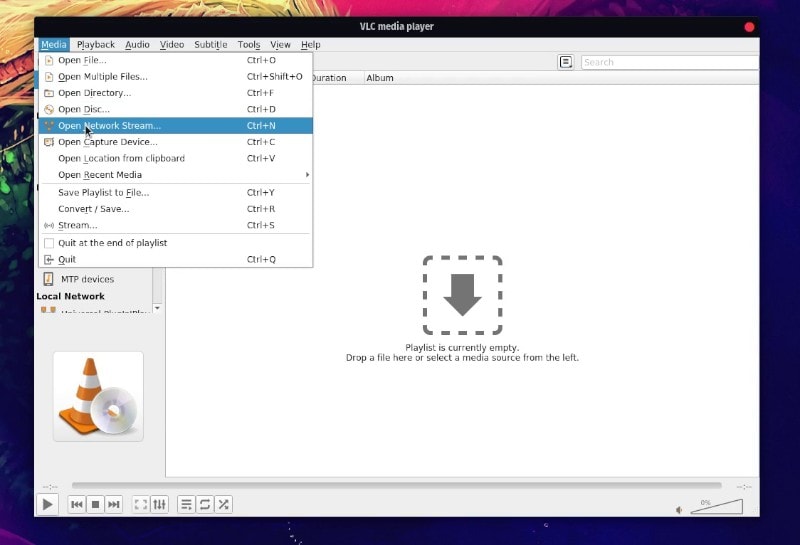
If you do not want to watch the annoying advertisements on YouTube or simply want a distraction-free experience for watching a YouTube video, you can use VLC.
Yes, it is very easy to stream a YouTube video on VLC.
Simply launch the VLC player, head to the Media settings and click on “Open Network Stream” or CTRL + N as a shortcut to that.
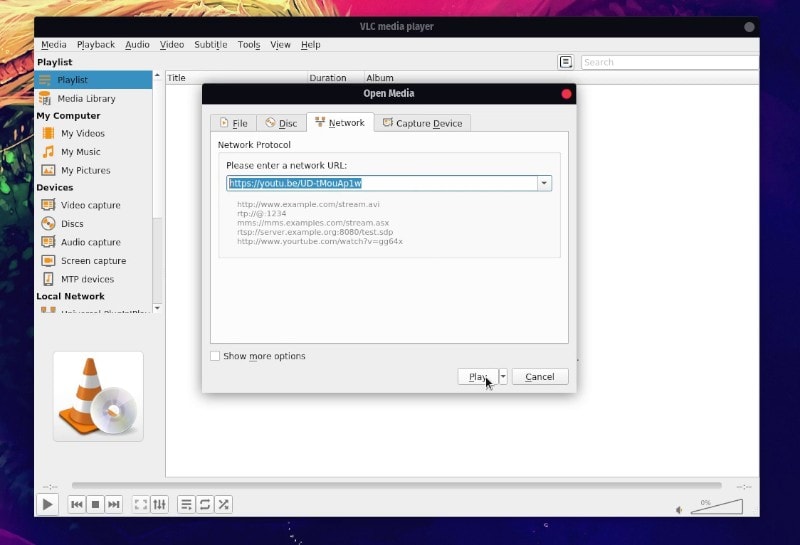
Next, you just have to paste the URL of the video that you want to watch. There are some options to tweak – usually, you should not bother using them. But, if you are curious you can click on the “Advanced options” to explore.
You can also add subtitles to the YouTube videos this way. However, an easier way to watch YouTube or any online video with subtitles is using Penguin subtitle player.
2. Convert videos to different formats
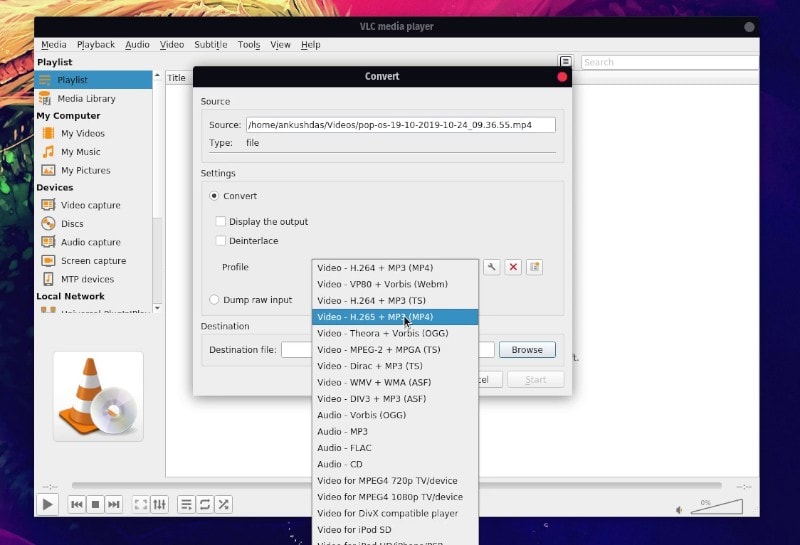
You can use ffmpeg to convert videos in Linux command line. You can also use a graphical tool like HandBrake to convert video formats.
But if you do not want a separate app to transcode videos, you can use VLC media player to get the job done.
To do that, just head on to the Media option on VLC and then click on “Convert/Save” or press CTRL + R as a shortcut to get there while you have VLC media player active.
Next, you will need to either import the video from your computer/disk or paste the URL of the video that you want to save/convert.
Whatever your input source is – just hit the “Convert/Save” button after selecting the file.
Now, you will find another window that gives you the option to change the “Profile” from the settings. Click on it and choose a format that you’d like the video to be converted to (and saved).
You can also change the storage path for the converted file by setting the destination folder at the bottom of the screen before converting it.
3. Record Audio/Video From Source
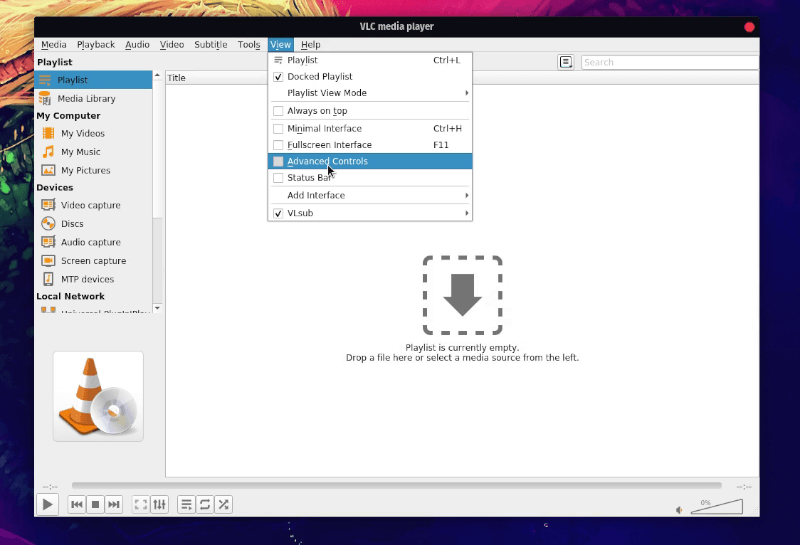
Do you want to record the audio/video you’re playing on VLC Media Player?
If yes, there’s an easy solution to that. Simply navigate your way through View->click on “Advanced Controls”.
Once you do that, you should observe new buttons (including a red record button in your VLC player).
4. Download subtitles automatically

Yes, you can automatically download subtitles with VLC. You do not even have to look for it on a separate website. You just have to navigate your way to View->VLSub.
By default, it is deactivated, so when you click on the option it gets activated and lets you search/download the subtitles you wanted.
VLC also lets you synchronize the subtitles with simple keyboard shortcuts.
5. Take A Snapshot
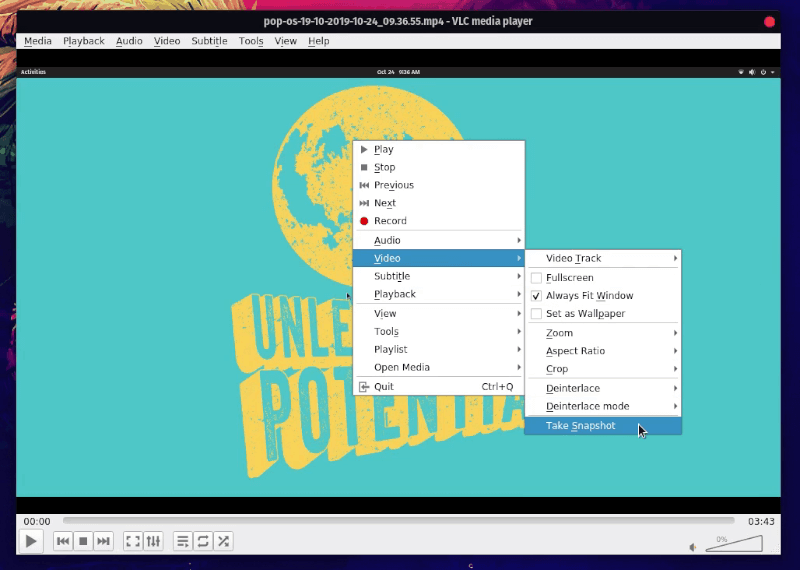
With VLC, you can get some screenshots/images of the video while watching it.
You just need to right-click on the player while the video is playing/paused, you will notice a bunch of options now, navigate through Video->Take Snapshot.
If you have an old version installed, you might observe the snapshot option right after performing a right-click.
Bonus Tip: Add Audio/Video Effects to a video
From the menu, go to the “Tools” option. Now, click on “Effects and Filters” or simply press CTRL + E from the VLC player window to open up the option.
Here, you can observe audio effects and video effects that you can add to your video. You may not be able to see all the changes in real-time, so you will have to tweak it and save it in order to see what happens.

I’ll suggest keeping a backup of the original video before you modify the video.
What’s your favorite VLC tip?
I shared some of my favourite VLC tips. Do you know some cool tip that you use regularly with VLC? Why not share it with us? I may add it to the list here.

